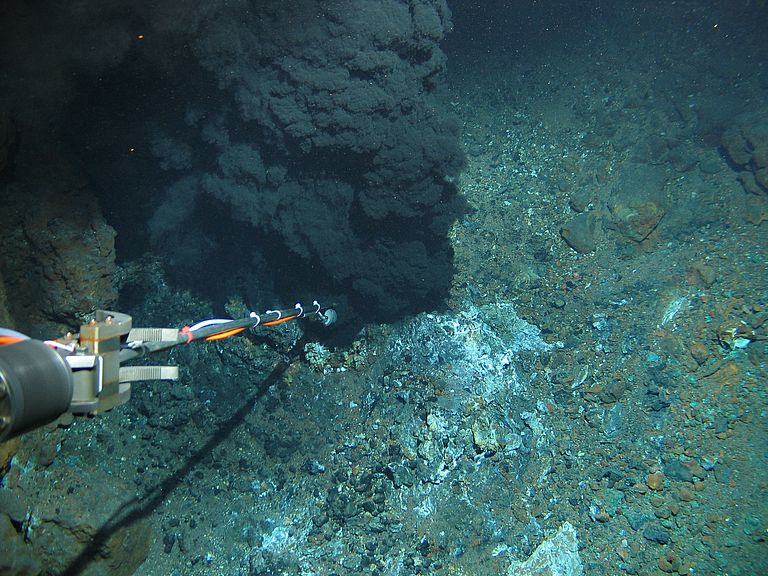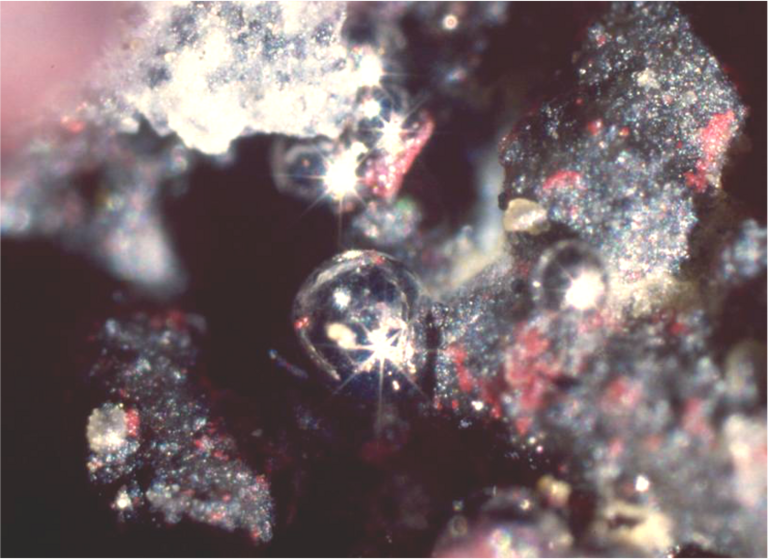Anna Niewerth
Phone: +49 (0) 431 600 2812
E-Mail: aniewerth(at)geomar.de
Hydrothermal Mercury – the natural story of a contaminant
Human influences are responsible for the majority of mercury pollution in the ocean
Ten years ago, the United Nations agreed to minimise mercury pollution in the environment to protect human health: the Minamata Convention was adopted in Geneva in 2013. Signatory countries committed to controlling and minimising the release of mercury. One of the main sources of human mercury intake is the consumption of contaminated fish, which accumulate mercury dissolved in seawater. It is estimated that anthropogenic activities have increased the global mercury reservoir in the ocean by 21 per cent. However, this figure is difficult to verify because it was not known exactly how much natural mercury was present in the ocean before anthropogenic emissions began. It is therefore equally difficult to say how much these have influenced mercury levels in fish.
To fill this knowledge gap, an international team of researchers led by the French National Centre for Scientific Research (Centre national de la recherche scientifique, CNRS) has now produced the first global estimate of mercury emissions from hydrothermal sources at mid-ocean ridges, volcanically active areas in the world's oceans, based on measurements.
Dr Sven Petersen, a geoscientist in the "Marine Mineral Resources" working group at the GEOMAR Helmholtz Centre for Ocean Research in Kiel, where metals in the ocean are an important research focus, is a co-author of the study. “Hydrothermal vents are the most important direct source of natural mercury in the ocean,” he explains, “but until now, the data on how much mercury they contribute has varied between 20 and 2,000 tonnes per year”. This is mainly due to the fact that previous studies have only measured the hot solutions escaping from the sources. For the current study, published in the journal Nature Geoscience, the scientists analysed not only the escaping fluids but also clouds of suspended matter known as plumes, seawater and rocks. The samples were collected during the GEOTRACES and ODP (Ocean Drilling Programme, predecessor of the Integrated Ocean Drilling Programme, IODP) expeditions. GEOTRACES expeditions focus on the study of trace metals and their distribution in the oceans, while ODP expeditions drill rock samples from the seafloor.
“Our combined observations suggest that most of the mercury accumulated in the hot solutions is diluted in seawater,” says the study’s lead author, Dr Lars-Eric Heimbürger-Boavida, a CNRS scientist at the Mediterranean Institute of Oceanography (MIO). Only a small fraction is precipitated locally and remains on the seafloor. Overall, the results show that the global hydrothermal mercury flux from mid-ocean ridges is small compared to anthropogenic mercury emissions. First author Natalia Torres-Rodriguez, PhD student at the MIO: “This ranges from 1.5 to 65 tonnes per year”. This suggests that the majority of mercury in the ocean is of anthropogenic origin. With this result, the researchers hope that the strict implementation of emission reductions under the Minamata Convention will reduce mercury levels in fish and human exposure.
About Mercury and the Minamata Convention:
Mercury (Hg) is a heavy metal that occurs in metallic, oxidised or organically bound forms. Apart from acute poisoning from handling elemental mercury, methylmercury poses the greatest threat to humans and the environment. The compound accumulates in the food chain and can lead to poisoning and irreversible brain damage, particularly in foetuses and young children, if larger species of fish are consumed in above-average quantities.
Mercury is naturally released into the atmosphere by volcanic eruptions, geysers or the burning of biomass (e.g. forest or grassland fires). Additional releases occur as a result of human activities such as the mining of mercury ores and other mercury-containing rocks such as limestone or coal. Mercury emissions are global, meaning that non-industrialised areas are also polluted.
According to a 2018 publication, around 3,100 tonnes of mercury are released annually as a result of human activities.
Against this backdrop, 128 countries, including Germany, adopted the United Nations Environment Programme's (UNEP) Minamata Convention in 2013 to reduce mercury emissions worldwide. It is named after the bay in Japan where industrial wastewater containing mercury poisoned thousands of people in the mid-20th century, leading to serious health problems known as "Minamata disease". (Sources: Federal Environment Agency, UNEP, Outridge, P.M. et al, 2018)
Publication:
Torres-Rodriguez, N., Yuan, J.,Petersen, S., Dufour, A., Gonzalez-Santana, D., Chavagnac, V., Planquette, H., Horvat, M., Amouroux, D., Cathalot, C., Pelleter, E., Sun, R., Sonke, J.E., Luther, G.W., Heimbürger-Boavida, L.E.: Mercury fluxes from hydrothermal venting at mid-ocean ridges constrained by measurements. Nature Geoscience (2023). DOI: 10.1038/s41561-023-01341

ROV KIEL 6000 working on the seabed in the area of the Mid-Atlantic Ridge: rock analyses were also included in the new study. Photo: ROV team, GEOMAR

Sampling the fluids of a black smoker at the Mid-Atlantic Ridge. Photo: ROV team, GEOMAR
![[Translate to English:] Halbierte Bohrkerne mit Gestein liegen auf einem Tisch](/fileadmin/_processed_/1/6/csm_ODP_Kerne_TAG_22f7b7aea0.png)
Drill cores obtained during an ODP expedition. Photo: Sven Petersen, GEOMAR

Droplets of native mercury on samples formed at hot springs in the Bay of Plenty, New Zealand. Photo: R. Kelly, Geological Survey of Canada.


